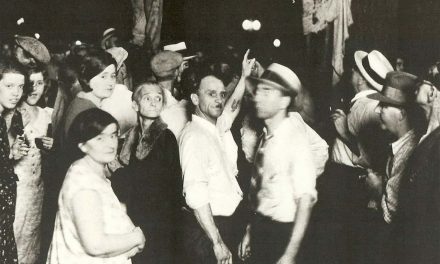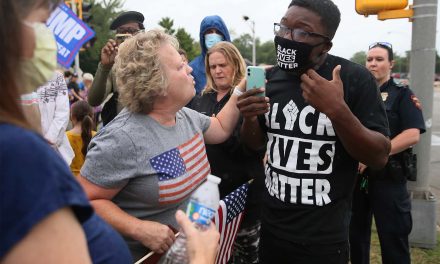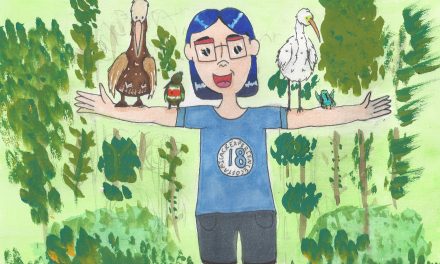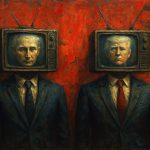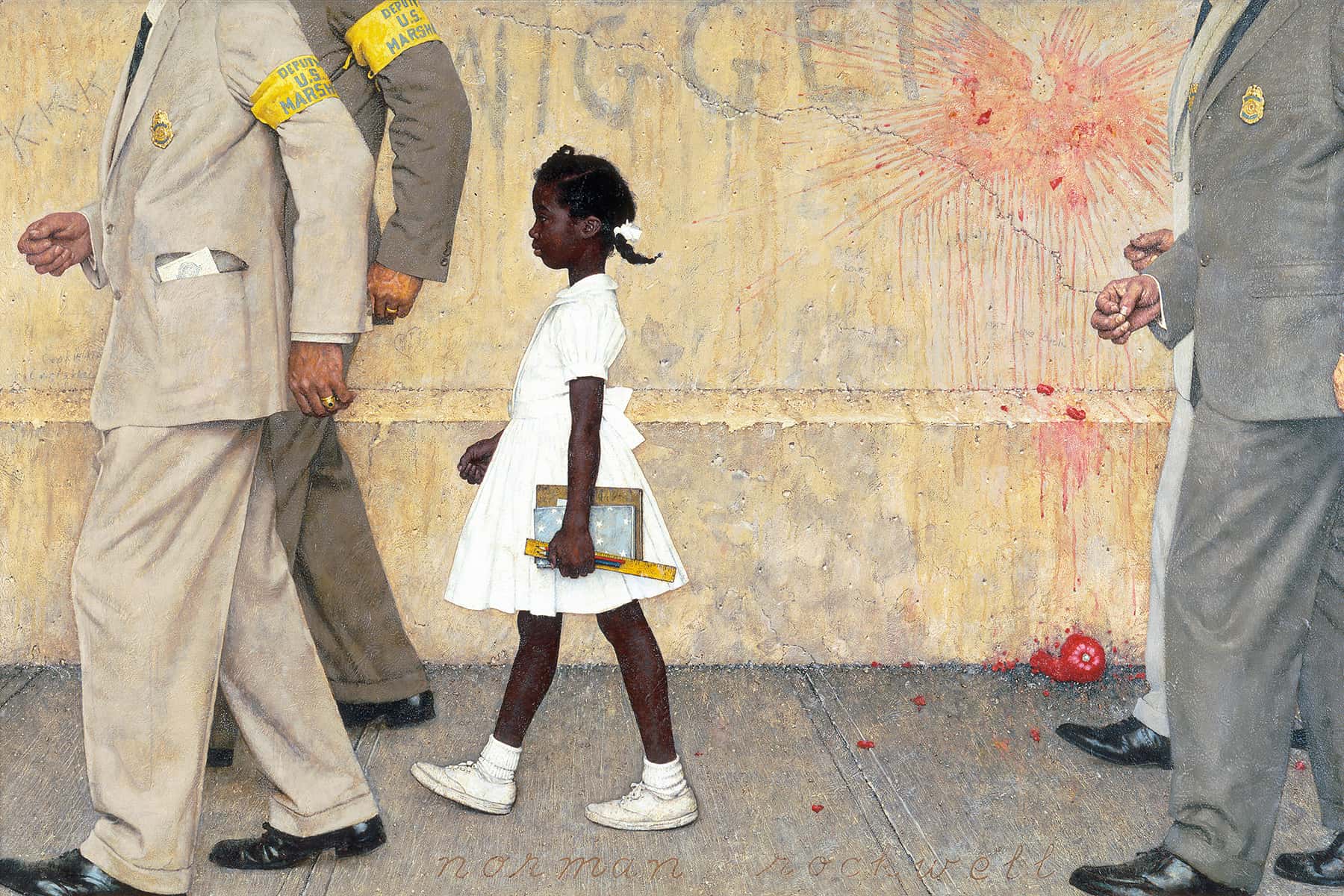
OBDURATE: Unmoved by persuasion, pity, or tender feelings; stubborn; unyielding; stubbornly resistant to moral influence; persistently impenitent.
IMPENITENT: Not feeling regret about one’s sin or sins.
Racism is part of a system that allows groups of people to benefit from all of the resources available within a society while simultaneously denying the benefits to others deemed incorrigible. In America, racism has benefitted those we call white and denied people of color the benefits accrued by whites. Along the way different white ethnic groups have been lumped into the group of incorrigibles, but only temporarily as they assimilated into the collective white masses.
The obdurate and impenitent attitudes we see on display when we try to talk about racism and tell the truth of America’s ugly past and present assures me that racism will be a permanent fixture in America regardless of how hard we fight against it. Racism benefits whites who are racists and those who are not racists.
One of the core aspects of racism in its systemic state, is people being able to ignore the impact on the victims of racism. Those in the majority group in this country for many years have perpetrated horrible acts of violence without blinking an eye, or feeling any really discernible guilt. How does this happen? How can groups of people massacre Native American women, children and elders and not feel any empathy?
How can crowds of thousands roast a black man alive, and fight for body parts as souvenirs after the remains cool off? How can a nation accept decades of blocking Chinese immigration while claiming the nation is a nation of immigrants? How can federal, state, and locally elected officials write laws disenfranchising millions, denying them access to home ownership, access to most colleges and universities while ensuring whites are not impacted by these same laws? How can white people see the viral videos of George Floyd, Laquan McDonald, Eric Garner and others and still blame them saying we should “back the badge?”
I have written in the past about ideas like social alexithymia, an inability to empathize with those who are the most downtrodden in our society. Professors Joe Feagin and the late Hérnan Vera developed the concept to help explain the persistence of racism in America. They described social alexithymia as “the inability of a majority of whites to relate to the commonplace, past and present, police brutality and other racial oppression faced by African Americans and other Americans of color.”
An interesting study was conducted by Italian scientist Alessio Avenanti. Joe Feagin described the experiment on his blog back in 2014.
“Avenanti recruited white and black Italian volunteers and asked them to watch videos of a stranger’s hand being poked. When people watch such scenes, it’s actually possible to measure their brain’s empathic tendencies. By simulating how the prick would feel, the brain activates the neurons of the observer’s hand in roughly the same place. These neurons become less excitable in the future. By checking their sensitivity, Avenanti could measure the effect that the video had on his recruits…most interestingly of all, he found that the recruits (both white and black) only responded empathetically when they saw hands that were the same skin tone as their own. If the hands belonged to a different ethnic group, the volunteers were unmoved by the pain they saw. Avenanti actually thinks that empathy is the default state, which only later gets disrupted by racial biases. He repeated his experiment using brightly coloured violet hands, which clearly didn’t belong to any known ethnic group. Despite the hands’ weird hues, when they were poked with needles, the recruits all showed a strong empathic response, reacting as they would to hands of their own skin tone … strong evidence that the lack of empathy from the first experiment stems not from mere novelty, but from racial biases.”
Feagin opined that “These anti-empathetic reactions are most serious for those who have the greatest power to oppress others, to cause great, routine, and recurring pain in racialized others, which is typically whites in Europe and the United States. In the U.S. case, whites’ recurring discriminatory actions targeting Americans of color — including thousands of police brutality and other malpractice incidents over the last decade — require a breakdown of normal human empathy…As it develops, racial oppression severely distorts human relationships and desensitizes the minds of those oppressing others.”
“Essential to being an oppressor is a significantly reduced ability to understand or relate to the emotions, such as recurring pain, of those targeted by oppression. Social alexithymia thus seems essential to the creation and maintenance of a racist society.”
How do humans develop these anti-empathetic impulses? Feagin describes the process as part of what he calls the “white racial frame.” He explains this frame of reference or way of seeing the world around us as something which “encompasses not only the stereotyping, bigotry, and racist ideology emphasized in other theories of “race,” but also the visual images, array of emotions, sounds of accented language, interlinking interpretations and narratives, and inclinations to discriminate that are still central to the frame’s everyday operations. Deeply imbedded in American minds and institutions, this white racial frame has for centuries functioned as a broad worldview, one essential to the routine legitimation, scripting, and maintenance of systemic racism in the United States.”
We are all given clues which get imprinted into our unconscious minds, and then reinforces the stereotypes and victim blaming concepts without putting any effort into it. Simply living in this country or being exposed to the huge worldwide reach of America’s powerful media platforms like television and movies is all it takes.
You do not need to teach it to your children, America will do that for you. These messages are never-ending, and so widespread that it is hard for some to believe in anything else. It leads to the self-inflicted internalized racism that pervades the minds of people of color. It makes people like Michael Jackson, who was one of the most famous and well recognized people in the world, bleach his skin and cut off part of his “black nose.” It leads to Asians around the world thinking something is wrong with their eyes and subsequently paying huge sums to have eyelid surgery to “correct their defect.”
This all-encompassing system likewise poisons the minds of whites. They are taught from their easiest years in sometimes subtle but often direct ways that they are better than non-white people. Many of them would resist this argument and reply that no one every told them they were better, that they learned to be colorblind and see everyone as the same. They might believe this to the core of their soul but the reality is that they did learn these things without realizing they were being taught to see the world in that way.
The system is subtle because it frames whiteness as normalcy. An example of how this works is in our language. The word minority is thrown around very casually to describe non-white people in this country. Mathematically speaking whites are about 61% of the nation’s population but account for just 11% of the body of humans on the planet. In states like Texas and California where whites are a mathematical minority they refuse to allow that word to be used to describe themselves. They instead use trickery by saying those states are “majority-minority” states.
Whites do not want to be called minorities because they know the word as it is used in this country has less to do with math and more to do with valuation of people. We have a racial hierarchy which has always placed whites at the top in America. Other groups have alternated places along this hierarchy with blacks always at the bottom. Minority in this way connotes less than, inferior and other adjectives which place people of color under whites in terms of how they are valued by society.
The fact that blacks are using the phrase “Black Lives Matter” as a way of saying “you have never valued us but you should” to America has caused some white people to become enraged, angry, exasperated, incensed, infuriated, irate, aggravated, livid, mad and otherwise upset and perturbed. It is clear to me that white people in general know that black lives don’t matter in the way white lives matter.
Ask a white person if they were forced to wake up tomorrow as something other than a white person and I doubt many would choose to wake up as a black person. The only exceptions would be those who chose to wake up as Oprah Winfrey, Barack Obama, Lebron James or some other wealthy well-known black person. Why is this the case? Because despite what they say to researchers asking them about the life conditions of black people, they know it’s better to be a white person in America than to be a black person. They might not know the extent of the difficulties of life for people of color, because they’ve never been exposed to the truth of that prior to the current protests leading to them paying attention in a way they never have before, but they know it anecdotally.
I describe the White Racial Frame as:
“a four hundred year-old world view that has led us all to believe and just as importantly act as if whites are superior to non-whites in intelligence, in moral virtues, and in behavior. It’s maintained by a persistent set of stereotypes and prejudices which we get constant reinforcement of through images and videos.”
The white racial frame plays a key role in the perpetuation of systemic racism by making us believe that people of color deserve to be less than whites. They are blamed for the conditions within their communities that in many respects were created by whites. The National Advisory Commission on Civil Disorders, also known the Kerner Commission said this in 1968.
“White society is deeply implicated in the ghetto. White institutions created it, white institutions maintain it, and white society condones it.”
How did white society create the ghettos, barrios, and reservations that people of color live in? It began by dispossessing Native Americans of their lands, literally stealing 2.43 billion acres of land and forcing them onto reservations far from their homes at gunpoint and then passing laws which made them responsible for getting to those horrible places. The early reservations got much smaller as white “settlers” encroached on the land they wanted to build homes.
As natural resources were found in those places even more whites flocked to get a piece of the riches. What’s left is some of the worst land in the country. Despite the US Supreme Court recently ruling that half of Oklahoma belongs to Native Americans we know that does not mean it really belongs to them.
When it came to Chinese, Japanese, Koreans and other people from Asia, they were forced into cramped “native quarters” like Chinatown in big cities like San Francisco and Los Angeles. Because they could not be naturalized as citizens due to the 1790 Naturalization Act which deemed those eligible for naturalization as limited to whites, they could not be citizens and did not have the ability to own land.
“Be it enacted by the Senate and House of Representatives of the United States of America, in Congress assembled,That any Alien being a free white person, who shall have resided within the limits and under the jurisdiction of the United States for the term of two years, may be admitted to become a citizen thereof.”
Mexico was once a huge nation. That changed when the Treaty of Guadalupe Hidalgo, that brought an official end to the Mexican-American War (1846-1848), was signed on February 2, 1848. Mexico ceded 55 percent of its territory, including parts of present-day Arizona, California, New Mexico, Texas, Colorado, Nevada, and Utah, to the United States. Mexico relinquished all claims to Texas, and recognized the Rio Grande as the southern boundary with the United States. Suddenly all of those Mexicans in that huge territory became Americans but weren’t treated as such. Soon they were forced off of their land as well. Likewise Puerto Rico, Guam, the Philippines and other places became US colonial possessions with the ending of the Spanish American War in 1898.
Ghettos known as barrios became the enclave that many in the Western US were forced to live in. The Federal Housing Administration (FHA) in the 1930s created a program to make it easier to become a homeowner by significantly lowering down payments, and stretching out the terms of home mortgages from the 3-5 year average at the time to twenty years. They backed mortgages for millions. Most of these loans went to whites.
From 1930-1950 ninety-eight percent of all FHA home loans went to whites only. As late as 1950 in Milwaukee not a single person of color had a FHA or Veterans Association (VA) guaranteed mortgage. 5,076 FHA mortgages and 3,028 VA mortgages within the city of Milwaukee were active in 1950 and not a single one went to people of color. Of the 27,596 active traditional bank mortgages in the city at that time 27,227 (98.7%) were held by whites while only 369 were held by people of color according to a special supplement to the 1950 Census.
In 1934 the Home Owners Loan Corporation, a federal government agency, began drawing Residential Security Maps known by most as redlining maps in 239 cities around the country. The map in Milwaukee described people who the government considered to be “inharmonious racial groups” as the reason some neighborhoods were given a grade of hazardous and designated as red on the maps.
In Milwaukee these inharmonious racial groups included, Polish families in what is now the Riverwest neighborhood, Mexicans on the south side, Blacks and recently immigrating Jews in the central city. Across the country blacks were always considered an inharmonious racial group along with Asians, Native Americans and some recently arriving white ethnic groups. From 1934-1940 the maps were drawn with local bankers and realtors assistance. A red designation meant that it would be either exceptionally difficult or impossible to get a mortgage because insurers would not take the risks.
According to the work of Richard Rothstein in his book, The Color of Law: A Forgotten History of How Our Government Segregated America, the FHA for decades instructed financial institutions not to lend to households in integrated or predominantly African American areas. At the same time they underwrote $120 billion in new homes for whites from 1934-1962 making white homeownership the norm for the first time in American history.
As angry whites lynched thousands of mostly Black, Asian, Native American and Hispanic people in the late nineteenth century and early twentieth century they were rarely held accountable. Likewise when white mobs attacked black communities in Springfield, Illinois in 1908, Atlanta, Georgia in 1906, East St. Louis Illinois in 1917, dozens of American cities in 1919 in what is known as Red Summer by historians, and Tulsa, Oklahoma in 1921 and Rosewood, Florida in 1923 it was rare that they were held accountable. What was even more conspicuous about this white racial terror was a lack of remorse.
One of the more brutal spectacle lynchings occurred in Waco, Texas and is known as the Waco Horror. In mid-May 1916 a huge crowd in excess of fifteen thousand whites watched and participated in the torture and burning to death of a mentally disabled black teenager, Jesse Washington after he was accused of murdering and sexually assaulting his white female employer despite the fact that the medical examiners report found no signs of a sexual assault. Many believe it was simply an argument that went badly leading to her being killed. It was described in a document written by the NAACP based on the report of Elizabeth Freeman who spent ten days in Waco investigating the sham trial and lynching.
“They pulled the boy down the stairs, put a chain around his body and hitched it to an automobile. The chain broke. The big fellow took the chain off the Negro…and wound it around his own wrist, so that the crowd jerking at the chain was jerking at the man’s wrist and he was holding the boy. The boy shrieked and struggled. The mob ripped the boy’s clothes off, cut them in bits…Someone cut his ear off; someone else unsexed him (cut off his genitals)…I went over the route the boy had been taken and saw that they dragged him between a quarter and a half a mile from the Courthouse to the bridge and then dragged him up two blocks and another block over to the City Hall…They got a little boy to light the fire…the naked boy was stabbed and the chain put over the tree. He tried to get away, but could not. He reached up to grab the chain and they cut off his fingers…he was lowered into the fire several times by means of the chain around his neck. Someone said they would estimate the boy had had about twenty-five stab wounds, none of them death-dealing…Women and children saw the lynching. One man held up his little boy above the heads of the crowd so that he could see…people…took a hand in showing their feelings in the matter by striking the Negro with anything obtainable, some struck him with shovels, bricks, clubs and others stabbed him…the infuriated mob then leaned the Negro, who was half dead, against the tree…fingers, ears, pieces of clothing, toes and other parts of the Negro’s body were cut off by members the mob…the body of the Negro was burned to a crisp and left for some time in the smoldering remains of the fire…Photographer Gildersleeve made several pictures of the body…Someone reported that we have quit selling the mob photos, this step was taken because our ‘City dads’ objected on the grounds of ‘bad publicity’…while the torso of the boy was being dragged through the streets behind the horse, the limbs dropped off and the head was put on the stoop of a disreputable woman…some little boys pulled out the teeth and sold them to some men for five dollars apiece. The chain was sold for twenty-five cents a link…The torso was taken to Robinson, hung to a tree, and shown off for a while, then they took it down again and dragged it back to town and put it on the fire again at five o’clock.”
I included all of the grisly details to show how this event was treated as a celebratory event attended by citizens of all ages, men women and children alike, who participated in the torture and dismemberment as well as profiting off selling the remnants of the lynching. This is just one of thousands of lynchings across the country in places as far and wide as Waco, Texas, Omaha, Nebraska, Duluth, Minnesota, Milwaukee, Wisconsin, Ellisville, Mississippi, New Orleans, Louisiana, Atlanta, Georgia, Marion, Indiana and many other places. As was the case in many of these spectacle lynchings with thousands in attendance the souvenirs are still sitting in trunks, attics, crawl spaces and safe deposit boxes that whites have cherished for generations.
So when we see the horrific viral videos of George Floyd and hear whites who can’t or won’t empathize with the family or black community we must be aware that it’s engrained in the hearts and minds of many of our fellow Americans. Systemic racism has many tentacles, and police violence is just one of them.
As I look at the lynching postcards James Allen collected in Without Sanctuary two questions always pop into my mind. Who did these children who witnessed and participated in lynchings grow up to be? How many of the white families who still have these souvenirs pull them out and reminisce back to when “America was great?”
Norman Rockwell / Norman Rockwell Museum
“The Problem We All Live With” by Norman Rockwell, 1964. Oil on canvas, 36″ x 58″
Rockwell’s first assignment for “Look” magazine was an illustration inspired by the story of Ruby Bridges. It features the six-year-old African-American school girl being escorted by four U.S. marshals to her first day at an all-white school in New Orleans, amidst signs of protest and fearful ignorance. The painting ushered in a new era in Rockwell’s career, and remains an important national symbol of the struggle for racial equality.

